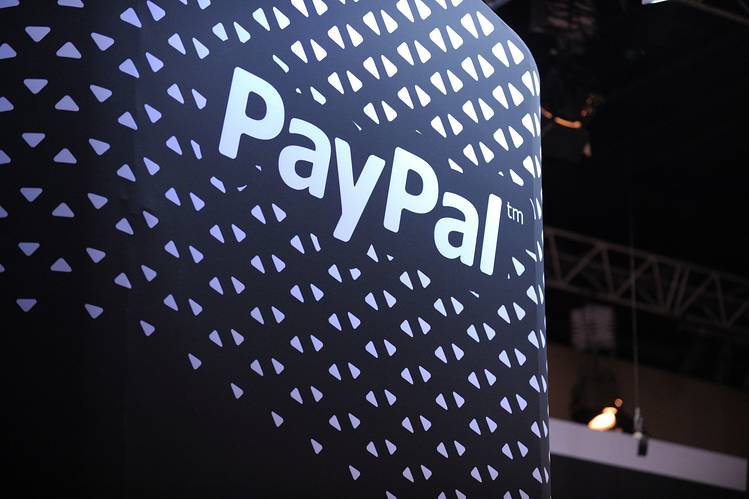
E-commerce has created a whole new world of opportunity for retailers: Consumers can shop whenever and wherever they want, clicking on that cute sweater they saw on Instagram and buying from a store halfway around the world.
Of course, by now we all know the downside to this revolution: The lion’s share of benefits has gone to just a handful of the largest retailers, while others struggle to catch up. And now, with more customers shopping on their mobile devices or using voice-activated assistants, there’s a whole new wave of innovation shaking up the industry, while many retailers have only recently gotten a handle on investing in their omnnichannel and “traditional” websites.
“The benefits [of e-commerce] haven’t been evenly distributed; it’s concentrated in the largest players,” says Bill Ready, chief operating officer of PayPal Holdings (PYPL). “With the move to mobile, it’s getting harder and harder for retailers to engage customers that are coming to them from new contexts, on mobile or through their social media feeds. We want to democratize access to players of all size.”
There’s no doubt it’s been difficult for small retailers to keep up. With so many people shopping on their mobile phones, having a website simply isn’t enough anymore to attract and retain consumers, but seamless integration across devices and platforms is quite expensive. Ready tells Barron’s that a major pain point is checkout: Even if a retailer has effectively advertised to attract new customers, engaged them with merchandise, and gotten them to the checkout, far fewer users actually complete a purchase on their phones, compared with a desktop. It’s not hard to see why–if you’re new to a retailer, having to register and fill out information on a small touch screen is a shopping buzzkill. This is where PayPal comes in: With more than 230 million registered users, and more than 96 million PayPal One Touch users, the firm allows for simple, pain-free checkout. And as we’ve learned, convenience is the name of the game in retail today.
PayPal offers other benefits as well, including free returns and fraud protection for both buyers and sellers, features that would be difficult for small players on a tight budget to offer. (Free shipping is a major reason why consumers don’t complete a purchase.)
Ready argues that the importance of a partner like PayPal, which offers seamless, convenient checkout and other features, will only grow as retailers increasingly attract and interact with consumers in new ways, which, unlike the traditional store setting, are subject to many variables they can’t control.
That said, he’s certainly optimistic for the future of retail–and not just the major players. He argues that smaller retailers are often the first to notice and adopt new trends, like shopping social media feeds and new distribution platforms that reach millions of consumers around the world. With the right tools to maximize convenience, e-commerce, once seen as a threat across the industry, can be a positive opportunity again, and not just for the big guys.
Other News
The Supreme Court ruled today that states can require consumers to pay sales tax on goods purchased online. It’s being lauded as a victory for brick-and-mortar retailers. The Retail Industry Leaders Association (RILA) released a statement saying “This was the right case and the right time for the Court to act, and we couldn’t be more pleased with the outcome.”
Of course, plenty of investors may be wondering what that means for Amazon.com (AMZN). Moody’s lead retail analyst Charlie O’Shea writes that it shouldn’t affect the e-commerce giant much, because Amazon already collects sales tax in states that require doing so. Amazon’s third-party business, however, could see a more meaningful impact, as some of these sales have not been taxed. “As Amazon has continued to thrive despite losing the obvious pricing benefit it used to have from not collecting sales taxes in its proprietary business, it remains to be seen if this new ruling will have any real impact on its third-party sales, or if the convenience for shoppers and growing benefits to Prime members will mitigate the pricing shift.”
*
Jefferies recently wrapped up its Consumer Conference, and its analysts are out with major takeaways from the meeting Thursday. The headline? Things may truly be looking up.
Randal Konik, who covers softlines (like apparel and accessories) thinks that this year saw the “most positive tone he has observed in the 9 years Jefferies has hosted the conference.” He was heartened that several companies saw evidence of consumers trading up, i.e. Kohl’s (KSS) shoppers opting for branded items from makers like Under Armour (UAA). He also thinks that the promotional environment may have improved a bit.
Dan Binder, who covers hardlines (like appliances and furniture) also left the conference with optimism, as he senses that the “consumer environment feels about as good as it has in a decade.” Sales of high-ticket items have been doing well this year, as highlighted by Willams-Sonoma (WSM) and Ollie’s Bargain Outlet (OLLI), and Home Depot (HD) was confident that they would regain sales lost to poor weather this spring.
Stephanie Wissink, who covers beauty, noted an upbeat note from management teams and writes that there are “the beginnings of a recovery in mass beauty,” which she thinks would benefit e.l.f. Beauty (ELF) in particular.
Sign up to Review & Preview, a new daily email from Barron’s. Every evening we’ll review the news that moved markets during the day and look ahead to what it means for your portfolio in the morning.

